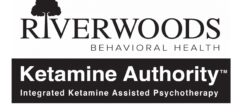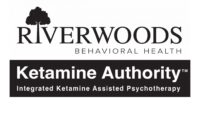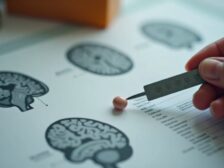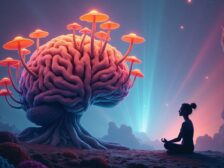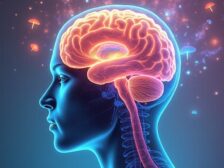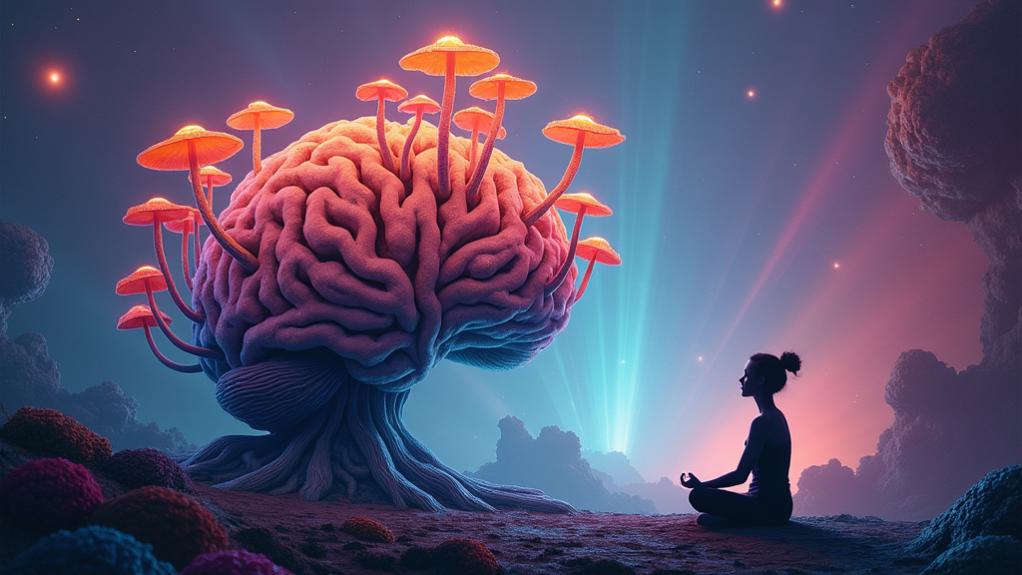
We consider mushrooms or psychedelics for dissociation therapy due to their unique effects on the mind and potential therapeutic benefits. These substances can induce altered states of consciousness, allowing individuals to investigate and process deep-seated emotional issues. Psilocybin, found in certain mushrooms, tends to produce milder dissociative effects compared to ketamine, encouraging introspection and spiritual experiences. Both substances have shown promise in treating various mental health conditions, including depression, anxiety, and PTSD. However, their use comes with risks and legal considerations. The choice between mushrooms and other psychedelics depends on individual needs, treatment goals, and the specific dissociative effects desired. Understanding the subtleties of each option is essential for making an informed decision.
Dissociative Effects: Ketamine Vs Psilocybin
Both ketamine and psilocybin can induce dissociative states, but their mechanisms and effects differ markedly.
Ketamine, an NMDA receptor antagonist, produces a more intense and immediate dissociative experience. It's known for creating a sense of detachment from one's body and environment, often described as a "K-hole." Ketamine's mechanisms involve blocking glutamate signaling, leading to altered perception and cognition.
Psilocybin, on the other hand, acts primarily on serotonin receptors, particularly 5-HT2A. Its dissociative effects are generally milder and more gradual than ketamine's. Psilocybin's effects often include a sense of ego dissolution and altered time perception, rather than the complete detachment associated with ketamine. Users typically report feeling more connected to their surroundings and emotions, even as their sense of self becomes less defined.
We've observed that ketamine's dissociative state is often described as more "external," while psilocybin's is more "internal."
This distinction can be significant when considering therapeutic applications. Ketamine may be more suitable for addressing acute symptoms, while psilocybin might be better for introspective, long-term psychological work. Understanding these differences is vital for tailoring treatment approaches to individual needs.
Therapeutic Potential of Each Substance
The distinct dissociative effects of ketamine and psilocybin translate into unique therapeutic potentials for each substance. Ketamine's rapid-acting antidepressant properties make it particularly useful for treating severe depression and suicidal ideation. Its ability to promote neuroplasticity can help rewire negative thought patterns.
Psilocybin, on the other hand, shows promise in treating anxiety, addiction, and existential distress in terminal illnesses.
While both substances can facilitate emotional healing, their neurochemical mechanisms differ. Ketamine primarily affects glutamate and NMDA receptors, while psilocybin acts on serotonin systems. This distinction influences their therapeutic applications:
- Ketamine: Rapid relief from depression, PTSD, and chronic pain
- Psilocybin: Long-lasting improvements in mood, addiction, and end-of-life anxiety
- Ketamine: Enhanced cognitive flexibility and viewpoint-shifting
- Psilocybin: Increased introspection and spiritual experiences
We must consider the specific needs of each patient when choosing between these substances. Ketamine's shorter duration may be preferable for some, while psilocybin's more significant psychedelic experience could benefit others.
Ongoing research continues to uncover the full therapeutic potential of both ketamine and psilocybin in dissociation therapy.
Duration and Intensity Differences
When considering ketamine and psilocybin for dissociation therapy, we must account for their distinct duration and intensity profiles. Ketamine typically produces effects lasting 1-2 hours, with peak intensity occurring within 10-15 minutes after administration. This short duration allows for more controlled and manageable therapeutic sessions.
Psilocybin, on the other hand, can induce effects lasting 4-6 hours, with peak intensity around 2-3 hours post-ingestion.
The intensity of dissociation mechanisms also differs between these substances. Ketamine tends to create a more significant and immediate disconnection from one's sense of self and surroundings. Psilocybin's dissociative effects are often described as more gradual and intertwined with other perceptual changes.
This duration variability impacts treatment protocols and patient experiences. Ketamine's shorter duration may be preferable for patients with time constraints or those who require more frequent sessions. Psilocybin's longer-lasting effects might be suitable for deeper exploration of dissociative states and integration of understanding.
Understanding these differences is essential for tailoring treatment approaches to individual patient needs and optimizing therapeutic outcomes in dissociation therapy.
Safety Profiles and Risks
Examining the safety profiles and risks associated with ketamine and psilocybin is essential when considering their use in dissociation therapy. Both substances have been studied extensively, with ketamine having a longer history of medical use. While generally considered safe when administered in controlled settings, they do carry potential risks and adverse reactions.
Ketamine's safety profile is well-established due to its use as an anesthetic. Short-term side effects can include nausea, dizziness, and increased blood pressure. Long-term effects of repeated use may include bladder issues and cognitive impairment.
Psilocybin, while not physically addictive, can cause temporary psychological distress during the experience.
Key safety considerations for both substances include:
- Proper screening for contraindications and mental health conditions
- Controlled, supervised administration in a clinical setting
- Integration support following the experience
- Monitoring for potential adverse reactions
We must emphasize that the long-term effects of repeated use for dissociation therapy are still being studied. While initial results are promising, more research is needed to fully understand the safety implications of these treatments.
As with any medical intervention, the potential benefits must be weighed against the risks for each individual patient.
Accessibility and Legal Considerations
Despite the promising therapeutic potential of ketamine and psilocybin for dissociation therapy, accessibility and legal considerations remain significant obstacles to widespread adoption. The legal status of these substances varies widely across jurisdictions, with most countries classifying them as controlled substances. In the United States, ketamine is a Schedule III drug, while psilocybin remains a Schedule I substance, severely limiting its use in clinical settings.
Availability issues further complicate access to these treatments. Ketamine clinics have become more common in recent years, but they're often concentrated in urban areas and can be prohibitively expensive for many patients. Psilocybin therapy, where legal, is typically only available through clinical trials or in highly regulated settings.
We must also consider the regulatory challenges facing researchers and practitioners. Obtaining approval for studies involving controlled substances can be challenging and time-consuming. Additionally, healthcare providers may be hesitant to recommend or administer these treatments due to legal and professional risks.
As research progresses, we anticipate gradual shifts in legal and regulatory systems. However, until significant changes occur, accessibility will likely remain a major obstacle for many seeking dissociation therapy with psychedelics.
Integration Process Comparison
In comparing the integration processes for mushroom and ketamine-based dissociation therapies, we find notable differences in approach and duration. Mushroom therapy typically requires a longer integration period, often spanning several weeks, while ketamine integration may be more condensed, lasting a few days to a week. This variation stems from the distinct pharmacological properties and experiential nature of each substance.
Integration techniques for both therapies may include:
- Journaling and self-reflection
- Group integration sessions
- Somatic practices like yoga or breathwork
- Creative expression through art or music
Client experiences during integration often differ. Mushroom therapy clients frequently report significant revelations and emotional breakthroughs that require extensive processing. In contrast, ketamine therapy clients may experience more immediate relief from dissociative symptoms but might need support in maintaining these effects.
The integration process for mushroom therapy often involves more comprehensive exploration of personal narratives and belief systems. Ketamine integration, while still significant, may focus more on reinforcing the neuroplastic changes induced by the treatment.
Both approaches aim to solidify therapeutic gains and incorporate understandings into daily life, but the specific methods and timeline can vary considerably based on individual needs and the chosen substance.
Cost and Treatment Frequency
The financial aspects and treatment schedules of mushroom and ketamine therapies for dissociation differ considerably. When considering these treatments, we must evaluate both the immediate costs and long-term benefits.
Mushroom therapy typically involves fewer sessions, often spaced weeks or months apart. This less frequent treatment schedule can result in lower overall costs. However, the unregulated nature of psychedelic substances may lead to additional expenses for sourcing and testing.
In contrast, ketamine therapy usually requires more frequent sessions, sometimes multiple times per week initially, followed by maintenance treatments. This higher frequency can increase short-term costs but may provide more immediate relief.
Financial considerations extend beyond session fees. We must factor in potential lost wages due to treatment time and recovery periods. Additionally, the long-term benefits of each therapy may impact future healthcare costs.
While mushroom therapy might offer more enduring effects, reducing the need for ongoing treatment, ketamine's rapid action could lead to quicker return to work and productivity. Ultimately, the cost-effectiveness of each approach depends on individual response, treatment duration, and the specific dissociative symptoms being addressed.
Personalized Treatment Approaches
Every individual's experience with dissociation is unique, necessitating customized treatment approaches for best outcomes. We recognize that personalized treatment plans are essential when considering mushrooms or psychedelics for dissociation therapy. These individualized experiences take into account a patient's specific symptoms, medical history, and individual preferences.
When developing a personalized approach, we consider several factors:
- The severity and type of dissociative symptoms
- The patient's previous experiences with psychedelics or therapy
- Any co-occurring mental health conditions
- The patient's comfort level and readiness for psychedelic-assisted therapy
By carefully evaluating these elements, we can create a treatment plan that maximizes the potential benefits while minimizing risks. This may involve adjusting dosages, combining psychedelic sessions with traditional therapy, or incorporating complementary practices like meditation or breathwork.
Personalized approaches also extend to the setting and support provided during psychedelic experiences. We customize the environment and guidance to each patient's needs, ensuring a sense of safety and comfort.
This individualized care enhances the therapeutic potential of mushrooms and psychedelics, potentially leading to more significant and lasting healing for those struggling with dissociation.
In Summary
We've examined the key differences between ketamine and psilocybin for dissociation therapy. Both substances offer unique therapeutic potential, with varying effects, durations, and safety profiles. Legal status and accessibility also play vital roles in treatment selection. Ultimately, the choice between ketamine and psilocybin should be based on individual patient needs, medical history, and treatment goals. A personalized approach, considering all factors discussed, will likely yield the most effective outcomes in dissociation therapy.
